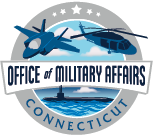Regional Council: Coast Guard Museum Should Be In Downtown New London
By Kimberly Drelich
The New London Day
June 23, 2016
The Southeastern Connecticut Council of Governments unanimously expressed its support Thursday for locating the National Coast Guard Museum at downtown New London's waterfront, in response to calls for it instead to be built in the Fort Trumbull area.
The regional council endorsed a resolution highlighting that the museum's proposed location would serve as a centerpiece of heritage sites in southeastern Connecticut, provide access to the Coast Guard barque Eagle and boost the region's economy.
The site, chosen two years ago by the Coast Guard, "will allow for maximum visitation of this national resource, will result in the greatest positive economic impact to the city's and region's economy, and is well-suited for the location of a museum dedicated to the men and women of the branch of service which keeps our coastal waters safe and our maritime economy thriving," the resolution states.
The resolution notes the gift of the land for the museum site from New London; the $20 million commitment from the state to build a pedestrian bridge over the railroad tracks; plans for a new passenger terminal to be built by Cross Sound Ferry; and a restoration project for the train station building in anticipation of the museum.
New London Mayor Michael Passero emphasized that the Coast Guard wants the museum in downtown New London and the city fully supports it.
He called recent Letters to the Editor in The Day, which question the location chosen by the Coast Guard and suggest that the museum's location could be reconsidered, "ill-informed." The letters call for the museum to be built at Fort Trumbull.
"I believe that if the project was to not succeed as planned at this point, it wouldn’t be built in New London and probably not in Connecticut," he told the council.
A federal law from 2004 states that New London must be the site of the National Coast Guard Museum.
The proposed location for the museum is in a 100-year flood zone designated by the Federal Emergency Management Agency. Museum planners and FEMA officials were scheduled to meet earlier this month to talk about flood plain issues, but the meeting was rescheduled to next month.
Bob Ross, executive director for the state's Office of Military Affairs, said "pre-permitting discussions" are taking place in Washington, D.C.
Ross urged local officials to add their voices to the dialogue and educate their constituents about why the Coast Guard chose the downtown New London site.
He raised a scenario of what could happen if the downtown site stalls.
The Coast Guard would face a decision to "either settle for that sub-optimum site of Fort Trumbull that they don’t want for many reasons, or do you answer all the hands across the country that are going to go up saying: ‘I have waterfront property, near a transportation system with population density,’” he said.
“The Coast Guard will face that decision, so we need to work together to make sure that the Coast Guard never has to face that decision," he said. "We don’t want to lose this property.”
He added later that he doesn't want enthusiasm for the project to wane.
Wes Pulver, the executive director of the National Coast Guard Museum Association, addressed the museum's location during a Southeastern Connecticut Cultural Coalition roundtable Thursday afternoon at the Hygienic Art Park in New London.
Pulver said sustainability was the "number one reason" the Coast Guard chose the site near City Pier.
The National Coast Guard Museum would need to have the maximum number of people visit it to remain sustainable.
He said about 1.2 million to 1.4 million people visit the downtown area near the train station, bus station and ferries.
Pulver highlighted the proximity of the museum to the barque Eagle, City Pier and the deepwater port.
Pulver acknowledged that any site along the water is a "challenging spot." But he said meetings among city, state and federal officials are taking place to ensure that all concerns are on the table and can be addressed in the final design of the museum.
At the regional council meeting Thursday morning, Griswold First Selectman Kevin Skulczyck said the museum is important for the region and will be "a big game-changer."
Catherine W. Cook, assistant treasurer for the National Coast Guard Museum Association, noted the benefits of locating the museum downtown, including that 1.4 million people visit New London's waterfront each year and that visitors to the museum could board the Eagle.
“We are going to become the place in America where we tell the story of America and the sea: from the dugout canoes of the Mashantucket Museum, to the Mystic Seaport whaling period, to the most sophistical integrated technology ever known to man — which is the submarines that go underground, under pressure, not the space shuttle — and we will tell the story of the Coast Guard’s 226 years of protecting America from the water, protecting the oceans and helping save lives," she said.

